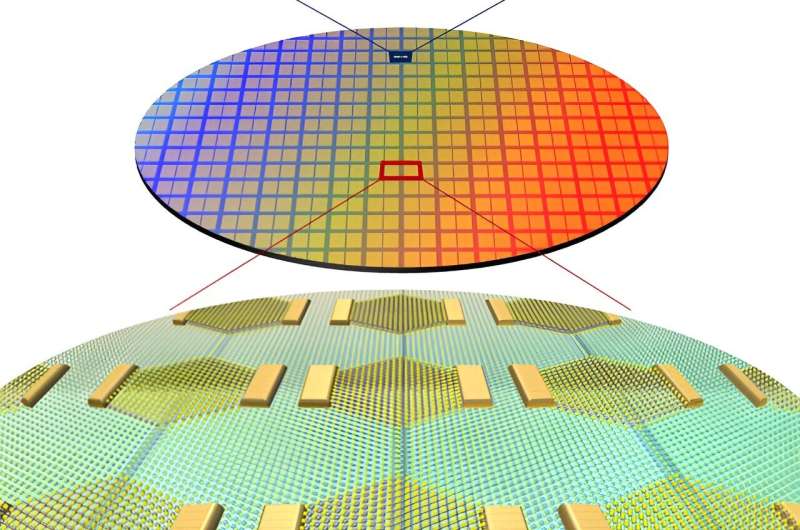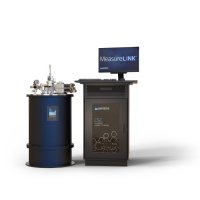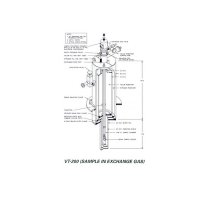Sobre Nós
A Quantum Design está ativa na América Latina desde 1998. Em 2010, o escritório latino-americano foi aberto no Brasil para atender às necessidades da grande e crescente base de pesquisa usando equipamentos da Quantum Design.
O escritório está completamente operacional, onde novos recursos estão sendo adicionados para facilitar as atividades para pesquisadores.
Estamos felizes em representar uma excelente linha de outras empresas de instrumentação científica para atender a América Latina.
CONFERÊNCIAS
-
 Jul/2024
29/07/2024 - 02/08/2024 | 00:00
XXI Physics Week UNICAMP
Jul/2024
29/07/2024 - 02/08/2024 | 00:00
XXI Physics Week UNICAMP
-
 Aug/2024
14/08/2024 - 16/08/2024 | 19:00
IV Symposium on Physics Applied to Medicine
Aug/2024
14/08/2024 - 16/08/2024 | 19:00
IV Symposium on Physics Applied to Medicine
-
 Aug/2024
18/08/2024 - 23/08/2024 | 08:00
32nd International Materials Research Congress (IMRC2024) - Cancun
Aug/2024
18/08/2024 - 23/08/2024 | 08:00
32nd International Materials Research Congress (IMRC2024) - Cancun
-
 Aug/2024
19/08/2024 - 23/09/2024 | 08:00
4th Workshop on Coated Tools & Multifunctional Thin Films
Aug/2024
19/08/2024 - 23/09/2024 | 08:00
4th Workshop on Coated Tools & Multifunctional Thin Films
-
 Aug/2024
28/08/2024 - 30/08/2024 | 08:00
I Latin American Microfluidics Conference (LAMic 2024)
Aug/2024
28/08/2024 - 30/08/2024 | 08:00
I Latin American Microfluidics Conference (LAMic 2024)
Blog
-
Artificial neural network syndrome decoding on IBM quantum processors Syndrome decoding is an integral but computationally demanding step in the implementation of quantum error correction for fault-tolerant quantum computing. Here, we report the development and benchmarking of Artificial Neural Network (ANN) decoding on IBM quantum processors. We demonstrate that ANNs can efficiently decode syndrome measurement data from heavy-hexagonal code architecture and apply appropriate corrections to facilitate error protection. The current physical error rates of IBM devices are above the code's threshold and restrict the scope of our ANN decoder for logical error rate suppression. However, our work confirms the applicability of ANN decoding methods of syndrome data retrieved from experimental devices and establishes machine learning as a promising pathway for quantum error correction when quantum devices with below threshold error rates become available in the near future. Leia mais (Inglês)
-
 New synthesis method enhances MoS₂ optoelectronic performance
An international research team led by Professor My Ali El Khakani of the Institut national de la recherche scientifique (INRS) has made a surprising discovery about the properties of molybdenum disulfide, also known as MoS2. The material is highly sought after in optoelectronics.
Leia mais (Inglês)
New synthesis method enhances MoS₂ optoelectronic performance
An international research team led by Professor My Ali El Khakani of the Institut national de la recherche scientifique (INRS) has made a surprising discovery about the properties of molybdenum disulfide, also known as MoS2. The material is highly sought after in optoelectronics.
Leia mais (Inglês)
-
 Scientists discover way to 'grow' sub-nanometer sized transistors
A research team led by Director Jo Moon-Ho of the Center for Van der Waals Quantum Solids within the Institute for Basic Science (IBS) has implemented a novel method to achieve epitaxial growth of 1D metallic materials with a width of less than 1 nm. The group applied this process to develop a new structure for 2D semiconductor logic circuits. Notably, they used the 1D metals as a gate electrode of the ultra-miniaturized transistor.
Leia mais (Inglês)
Scientists discover way to 'grow' sub-nanometer sized transistors
A research team led by Director Jo Moon-Ho of the Center for Van der Waals Quantum Solids within the Institute for Basic Science (IBS) has implemented a novel method to achieve epitaxial growth of 1D metallic materials with a width of less than 1 nm. The group applied this process to develop a new structure for 2D semiconductor logic circuits. Notably, they used the 1D metals as a gate electrode of the ultra-miniaturized transistor.
Leia mais (Inglês)





















